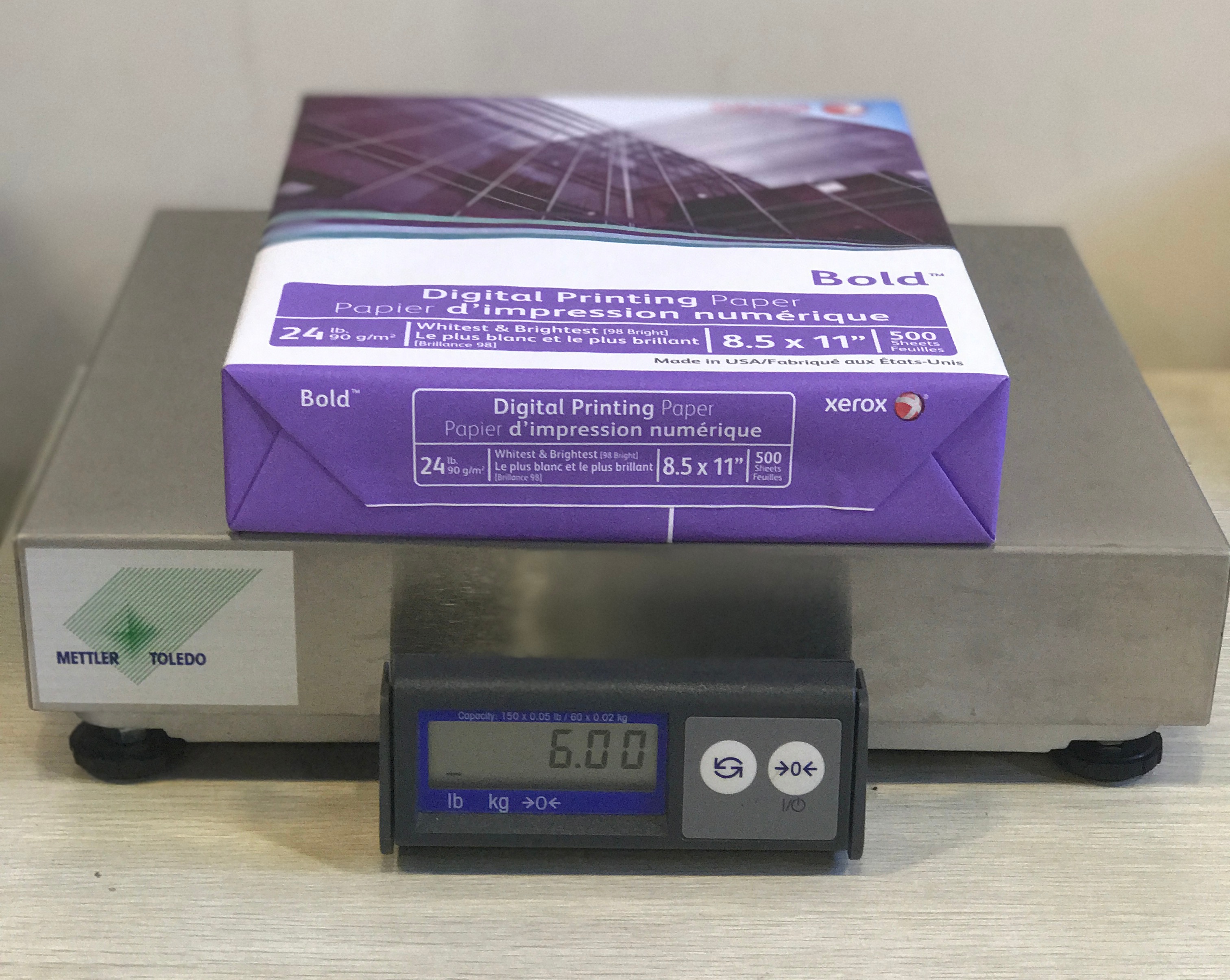Understanding Paper Weight and Why it Matters
Let’s talk paper weight (says no one ever…)! Oh, and we are referring to a paper’s weight, not paperweight, you know, like a heavy rock that keeps papers from flying everywhere in the event of an office tornado. Why? Because if you’ve ever experienced the angry wrath of a jammed printer, there’s a good chance incorrect paper weight was a factor. Enlightening, huh? Well, as they say, “The more you know…”
You should first understand that paper weight is not simply measured on a scale, the way you would measure, say, a piece of meat (or anything, really). If you like math, you’re in for a treat once we break down the measurement process, but it all stems back to how the paper is made. You probably aren’t surprised to hear that most paper is produced in large paper mills from tree wood and recycled paper. It leaves the mills on massive rolls weighing several hundred pounds, and from there, it is cut into large sheets, often called “parent” sheets or a “basis” sheet. So the weight of the basis sheet is the weight of the paper, right? If only it were that simple! The weight of the paper is determined during this process but there are still other factors that come into play.
Before we get into the math involved in measuring paper weight, we’ll familiarize you with some lingo you are sure to hear when navigating the world of print-solutions. If you consider yourself a “printer-using, paper-loading veteran,” you are probably used to seeing the term “GSM” on the paper you buy. GSM stands for the paper’s weight in Grams per Square Meter. Generally, the GSM rating gets larger as the paper gets thicker, although thicker paper sometimes contains more air, making it lighter, and glossy coating on thin paper will make it heavier. Factors such as thickness and coating are what we were referring to as “other factors” that determine the final weight of the paper. In most cases though, the higher the GSM number, the thicker your paper will be.
Although paper comes in various textures, dimensions, etc., let’s briefly focus on the most common type of printer paper: uncoated, 24-pound, 8 ½” x 11” sheets. A basis sheet – or parent sheet – of bond paper, named for its original use for government and corporate bond prints, measures 17” x 22”. If 500 sheets of basis paper weigh 24-pounds, it will be called 24-pound bond. When you take the 24-pound bond and cut it into four equal parts you’ll have 24-pounds of standard letter size sheets at 8 ½” x 11”. Considering that 500 basis sheets will make 2,000 letter sheets, each ream of 500 letter size sheets should weigh 6-pounds. Go ahead and try it for yourself! Something to also keep in mind is that one ream of letter sized sheets will always weigh a quarter of what’s designated on the label.
Now here’s where things can REALLY get complicated. Different types of paper come in different size basis sheets. A basis sheet of index paper is 25 ½” x 30 ½” and a basis sheet of cover paper is 20” x 26”. Since the basis sheet of index paper is significantly larger than the basis sheet of cover paper, the basis sheet of index paper will produce several more sheets of finished size/sheet. This is why 90-pound index sheets, although they weigh more, are thinner than 80-pound cover sheets. Book, tag, manuscript, offset, and several other types of paper all have different sized basis sheets.
Hopefully this helps clear things up concerning paper weight, if you were concerned at all to begin with. If not, it might come in handy if you’re ever in a trivia contest! If you want to learn more about paper weight, there are several paper conversion tables ready for you to use by conducting a quick Internet search. There are even apps for smartphones, and most are free. Cheers to more random knowledge and to fewer paper jams!

